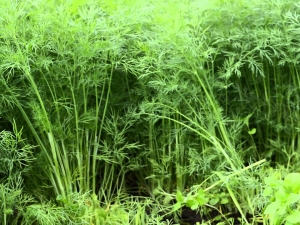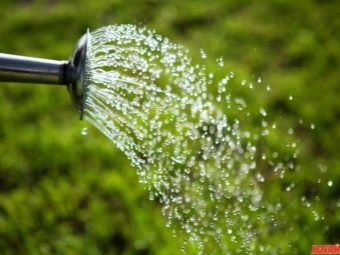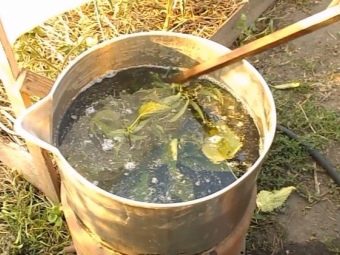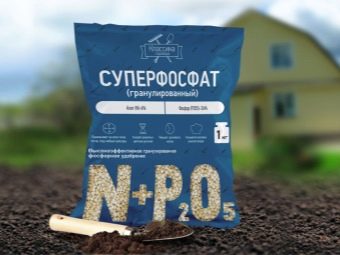How to feed the dill in the open field?

In each garden of the Russian summer resident a garden with greens must be found: onions, dill and parsley.Although these cultures seem to be completely unpretentious and, at first glance, capable of growing by themselves, of course, they still need to be fed. Sophisticated agricultural technology and regular fertilization are the guarantor of a rich and tasty harvest. This statement is true for dill.
What do plants need?
When planting dill in the open field, it is necessary to choose a plot that will be well lit, otherwise the culture will grow too slowly, the plants will be pale, too long and sluggish. It is impossible to use soils with high acidity, which have normalized with the help of lime and dolomite flour. It would be good to think about the neighborhood - although dill do not mind growing between other plants, but if they are planted too close, the latter will block the access of light rays. In addition, be sure to observe the rule of crop rotation and wait until the temperature reaches +15 degrees Celsius.
Dill should not be planted only on those beds where celery, cumin and cilantro were previously grown - it is favorable to other crops. As for the neighbors, the best options are cucumbers, tomatoes, zucchini and other vegetables. Do not forget about the importance of regular irrigation.
As for the soil, preference should be given loamy or sandy loam. To achieve the necessary composition can, making peat or sand. The resulting layer should reach a height of 30 centimeters, as dill has a rather long root. The acidity level should range from 6 to 7.5. If this figure is not normal, then the beds can be treated with ground shell eggs.
The soil should be loose, so that oxygen can easily flow to the root system, so this issue also needs to be addressed. For example, a plot can be watered with 100 grams of raw yeast dissolved in a liter of warm water and aged for two hours. The resulting solution is diluted in 10 liters of water, and it can be used every two weeks.
In addition, it is important to mention that the culture should be periodically thinned and watered only with heated liquid. Poor development of greens can be observed in the absence of the necessary amount of phosphorus and nitrogen in the layers of soil - these are the trace elements most needed dill.
Suitable types of fertilizers
Top dressing of fennel at different stages of its development can differ both in quantity and quality. Before planting, beds are treated with potassium salt and superphosphate. Typically, 20 grams of the first substance and 30 grams of the second is required per square meter. Potassium salt contains in its composition up to 40% of the main substance - potassium. It strengthens the immune system, including helping the culture to resist low temperatures, promotes growth and development, and also counteracts infectious diseases.
Since culture tends to accumulate nitrates, which is very harmful, adding mineral fertilizers, it is necessary to take into account that they must be applied very carefully, in compliance with the recommended proportions. At the first stage, one should not choose sodium nitrate and ammonium nitrate for this purpose.
By the way, in order to reduce the level of nitrates in already harvested herbs, it should be left in plain water for a couple of hours.
When the dill shoots appear, ammonium nitrate can still be added, but in extremely small quantities. The dosage should not exceed 8 grams per square meter of beds. Usually it is necessary to fertilize the soil at this stage when the garden bed has not been properly prepared before the winter season.
Further processing of the culture is usually carried out only with the help of organic matter. As it is chosen humus in the amount of half a bucket per square meter of beds, infused fresh mullein, diluted with water, which is taken ten times more. Sometimes a special solution "Biud" is used.It is obtained by treating horse manure in artificially created conditions and soil is diluted with twenty times the volume of water.
Considered to be very useful herbal solution, for example, with nettle. In general, it is prepared from any mowed grass and weeds. His recipe is as follows: young seedlings without seeds are cut into small pieces and laid down to half of the large capacity. All the rest is filled with settled water right up to the top, covered tightly with a lid and left for two weeks in a sunny place. To enhance the fermentation in water, you can add kvass, yeast or black bread, and stir occasionally.
The prepared liquid should be dark without bubbles and diluted with water. At will in it it is possible to dissolve some commercial fertilizer or saltpeter. As a result, half a bucket of fertilizer accounts for one square meter of bed. Watering is carried out once every two weeks. Nettle is not only rich in nutrients, but also protects the culture from insects and infections.
Among nitrogen fertilizers, the most common for dill are four types of nitrate, ammonia water, anhydrous ammonia and urea. It should be noted that ammonia and ammonia water are not used on the horticultural plots of households, since the process of work is very difficult.
Returning to organic matter, it is important to recall that there are still such varieties as sludge extracted from the river, sawdust and peat. Such supplements are available, and most importantly, are absolutely safe both for the culture itself and for human health. As a rule, they are rich in all necessary useful elements.
Terms and conditions
The first time to fertilize the area where the dill will be located is to be in the fall This is usually manure, which is then dug along with the top layer of soil. This organic matter will benefit not only the dill itself, but also other neighboring crops. It is rich in nitrogen and potassium, which is useful for the growth of culture. However, pure nitrogen fertilizers in the garden will be in the spring two weeks before the planned planting. During this time, the harmful excess ammonia will go away, and the nutrients will be assimilated by the soil.
Even before moving to the open ground, seeds must be processed properly. Seeds can be soaked in vodka, ash solution, or purchase means. The procedure allows you to clean the seeds from the essential oils that form a shell that prevents the penetration of water into the material. It is not necessary to feed the crop during the sowing itself, but if necessary it is allowed to pour it with a solution of urea. This substance contains nitrogen, which, in turn, is responsible for the formation of green pigment, and hence the growth of green mass.
After germination, you can make already any saltpeter: potassium, calcium or ammonium. If growth is difficult on peat beds, this indicates a lack of potassium and copper. In this case, it is recommended to purchase store stock and spraying. In addition to the above substances, dill is used ammonophos, which is introduced before planting, as well as nitrophosphate and ammonium orthophosphate. It will always be useful to add superphosphates - fertilizers, which include both nitrogen and phosphorus. It helps to grow all the important parts of the plant and, in addition, to protect it from various diseases.
Superphosphate is simple and double. Simple implemented in the form of granules and powder. It contains about 40% calcium, 25% phosphorus, as well as 10% sulfur and 8% nitrogen. Double contains much more phosphorus - up to 55%, 17% nitrogen and 6% sulfur. It is sold in the form of granules, which dissolve in the liquid. The average consumption is 30 grams of fertilizer per square meter of bed. The exact amount is determined depending on the condition of the soil.
It should be noted that the application of fertilizer is not necessary if cucumbers or cabbage previously lived in the beds. The only thing that will be appropriate is watering with nitrogen fertilizers at the time when shoots appear.
Experienced Gardeners Tips
Seasoned gardeners are able to give some practical recommendations explaining, for example, why dill quickly rose or grows poorly. For example, the red color of a plant may indicate that the soil was previously fertilized with lime mortar. As you know, the culture also does not tolerate the acidic soil, so the issue must be solved with the help of other supplements, or it is necessary to initially look for areas with neutral acidity. Although if lime was applied to normalize the soil for the precursor culture, then dill will feel normal.
In general, when planning fertilization, you should find out what the condition of the soil is, how rich it is in various elements, and what is the ability of dill to consume nutrients. In addition, it is important to figure out how much the yield may increase in the future. After that, it remains only to comply with all recommendations.
In addition, it is important to understand that it is better to underfeed than to overfeed the culture. If there is not enough fertilizer, the green will simply grow more slowly, and its composition will be less useful, but if it turns out to be too much, it is likely to have a harmful effect on humans, on the plant, and even on the environment.
When the green color of the plant turns yellow, it signals an insufficient amount of nitrogen. In this case, gardeners are advised to add urea, which is taken in the amount of one tablespoon to a standard bucket of distilled water. In addition, you can dilute the mullein, and the water should be more than the organic itself. If dill quickly bloomed, it means that the soil lacks moisture.
However, over-irrigated land oversaturated with potassium can lead to a reddening of the crop. If dill grows poorly, then urea and mullein will come to the rescue again, only slightly in other proportions. In the first case, a teaspoon of fertilizer per 10 liters of water is taken, and in the second, a tablespoon of the same amount.
How to grow fluffy dill, see the next video.




































